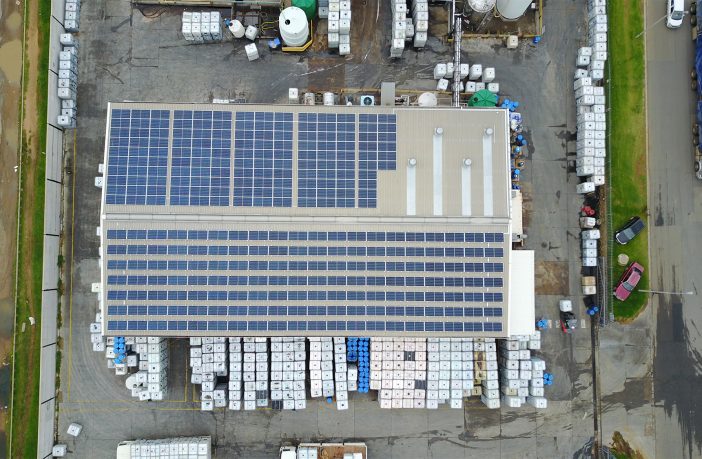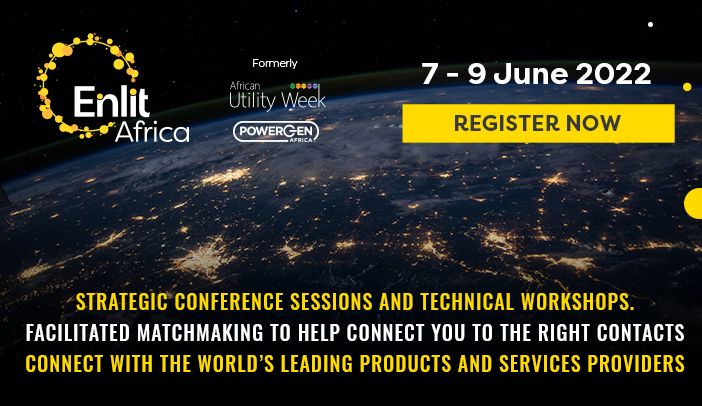- The African Solar Industry Association (AFSIA) puts the documented total solar capacity in Africa by the end of 2021 at 8.7GWp.
The Association got to this number by identifying 7.9GWp of solar projects as in operation by the end of 2020 with a further 721MWp identified in 2021 as new capacity. This is according to AFSIA’s second Annual Solar Outlook, which uses offers a granular look at Africa data, with the Association compiling data by approaching individual projects and their related capacities for information.
The team has identified more than 8,600 projects to date, of which close to 4,000 are already in operation. AFSIA does hedge its bets by pointing out the impossibility of tracking residential projects which are not documented publicly. Some large-scale Commercial and Industrial (C&I) projects may also have skipped their net, but they are working on ways to reduce the gaps between IRENA’s aggregated data and their project-by-project approach.
What is noticeable though is that in a record year for solar globally, Africa underperformed. In the past seven years, Africa has experienced two peaks when it installed 2.6% (2014) and 3.1% (2017) of the global new solar capacity.
In 2021, the data shows that Africa only presented 0.5% of the new capacity globally, which would be the lowest level since 2012.
So, despite a formidable known solar capacity, Africa still only hosts a small 1.3% share of the global installed solar capacity. And, since other regions are growing faster and going bigger, this African share has been steadily reducing since 2018 when it stood at 1.7%.
Reasons to be cheerful about Africa’s solar capacity
Still, AFSIA says there are reasons to be enthusiastic about solar in Africa. Despite not being aligned with the 25% global capacity increase, Africa’s solar capacity grew by 9%, which in normal times would be a remarkable performance.
Also note that the figures reflect the fact that most African countries are not suited to massively large-scale plants because grids cannot absorb the quantities, not because there isn’t a demand for electricity.
“The reality of solar in Africa is also very different from what we see elsewhere in the world because of the wide diversity of solar applications that are present in Africa,” reminds the report.
“Solar Home Systems (SHS) are legion across the continent but do not exist in Europe or the US. Yet, they enable millions of people to get access to electricity and to the basic needs it allows to address in rural areas.”
The Annual Solar Outlook 2022 says the SHS market has remained solid in most African countries despite COVID-19 pandemic related challenges. SHS providers also continue to rival with ingenuity as they come up with better, cheaper and more diversified solutions to reach the millions across Africa who still lack access to electricity.
Minigrids are also a special form of solar capacity that is not to be found in the developed world, but which Africa excels at.
While the expectation is that minigrids will build a pool of electricity access in villages with a strong focus on enabling C&I activity through productive use of energy initiatives “minigrids stakeholders are still battling to reach economies of scale and reach undisputable commercial viability.”
The report holds up high CAPEX and inadequate policy as the two main obstacles to this goal.
It may already be booming but you ain’t seen nothing yet
AFSIA’s second annual solar report says a final reason to be optimistic about solar capacity on the continent is the boom of solar for C&I users. “Business leaders across the continent often cite reliability and access to electricity as their main challenges (and not political instability, insecurity or red tape as many might be tempted to think).”
Improving and increasingly cheaper storage technology means more and more C&I customers able to produce their own electricity with solar reliably, and affordably. Africa is also seeing a growing number of investors specialising in financing such types of installations which removes the burden of the high initial capital expenditure.
These two factors are creating a virtuous circle of being able to plan and conduct business operations while reducing operational expenditure, increasing business turnover and ultimately creating more jobs.
Despite the encouraging growth of the sector, AFSIA thinks the true boom in the solar industry has not yet happened.
The report is comprised of country vignettes that are deep-dives into key market drivers and indicators for solar opportunities on a country level. This year the report also looks at some specific projects and opportunities.
Link to the AFSIA annual Solar Outlook 2022 HERE
Author: Theresa Smith
Theresa Smith is a conference producer for Vuka Group.
This article was originally published on ESI Africa and is republished with permission with minor editorial changes.
Disclaimer: The articles and videos expressed in this publication are those of the authors. They do not purport to reflect the opinions or views of Green Building Africa, our staff or our advertisers. The designations employed in this publication and the presentation of material therein do not imply the expression of any opinion whatsoever on the part Green Building Africa concerning the legal status of any country, area or territory or of its authorities.


















